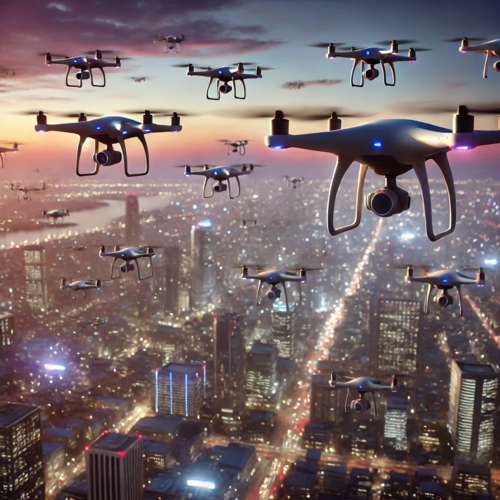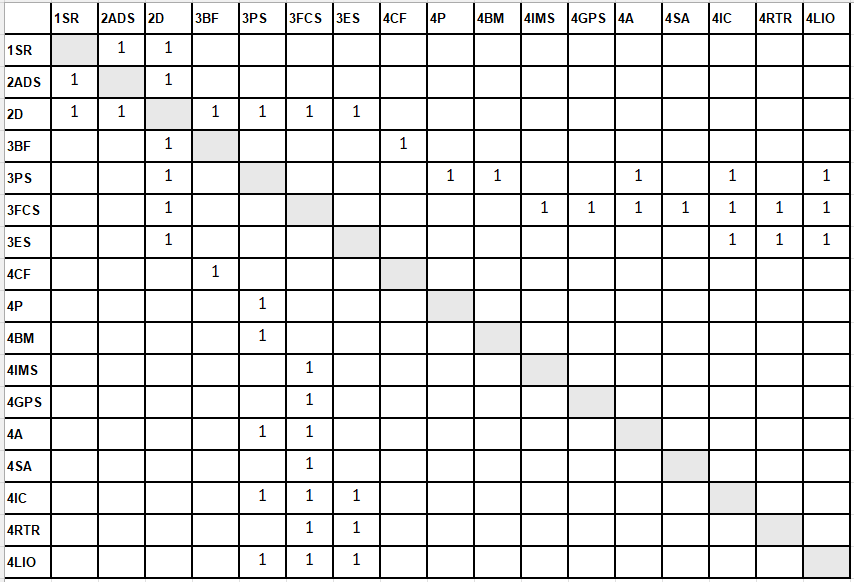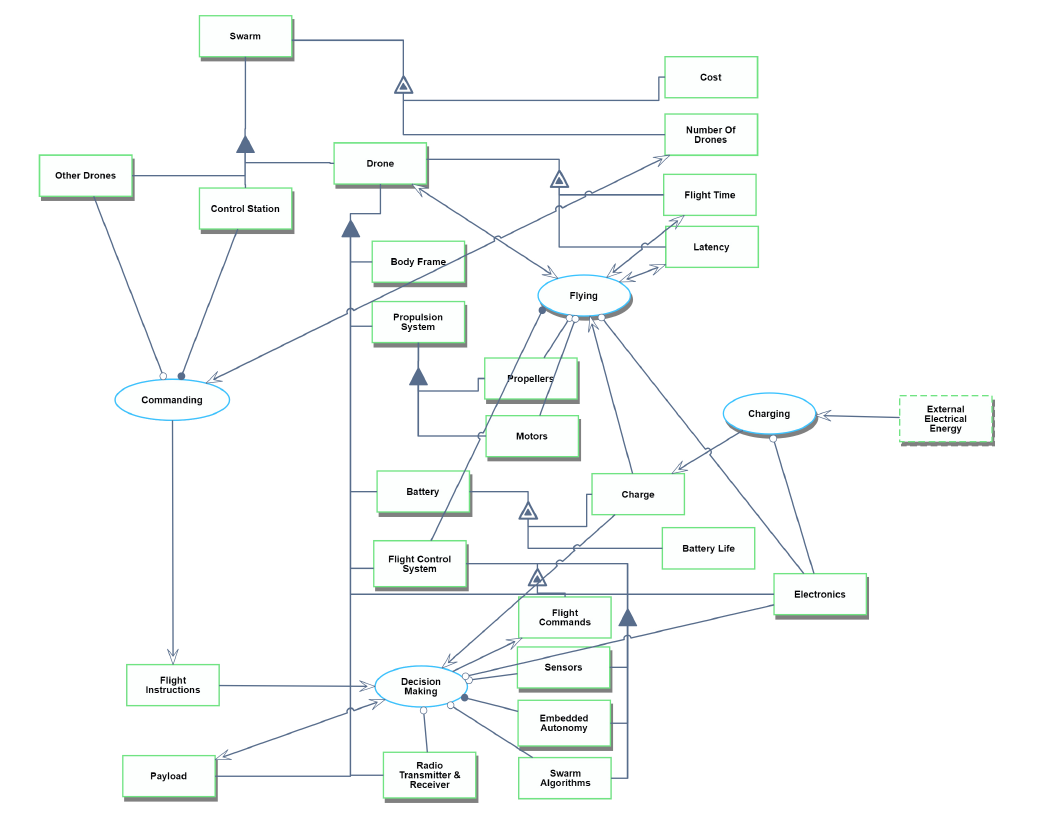2ADS Autonomous Drone Swarms
Authors: Abinaya Rajesh, Joe Mattekatt, Madhav Datt
Autonomous Drone Swarms
Roadmap Overview
Autonomous drone swarms are a collection of unmanned aerial vehicles (UAVs) that collaborate to perform a task with minimal human intervention. These drones take some information from a ground control station to outline the task but mainly rely on their own autonomous decision making to perform that task and synchronize with other drones in the swarm. Swarms can range from a few to thousands of drones depending on the application and the maturity of the technology used in these drones. Drone swarms have a variety of applications from military to aerial light shows. The focus of this research will be the technological advancements that have enabled the development of drone swarms and a prediction of where this technology will go next.
DSM Allocation
Autonomous Drone Swarms can be broken down into the following technologies that have some inter-dependencies.
1SR Swarm Robotics
- 2ADS Autonomous Drone Swarms
- 2D Drones
- 3BF Body Frame
- 4CF Carbon Fiber
- 3PS Propulsion System
- 4P Propellers
- 4BM Brushless Motors
- 3FCS Flight Control System
- 4IMS Inertial Measurement Sensors
- 4GPS GPS
- 4A Autonomy
- 4SA Swarm Algorithms
- 3ES Electric System
- 4IC Integrated Circuits
- 4RTR Radio Transmitter & Receiver
- 4LIO Lithium Ion Batteries
- 3BF Body Frame
OPM Model
Figures of Merit (FOM)
| FOM | Units | Significance |
|---|---|---|
| Swarm Size | [number of drones] | The number of drones in the swarm dictate the size and complexity of the light display that can be created. Larger swarms also require more sophisticated control software. |
| Flight Time | [min] | The battery life of a drone determines how long an aerial show can last. |
| Speed | [miles/hour] | Determined by motor. Decides if fit for certain use cases. |
| Range | [miles] | Specifies scope of operation and geographical coverage before. Computed as Flight Time * 60 * Speed. |
| Cost | [US Dollars] | Cost over overall system including per unit drone cost. |
| Latency | [ms] | How quickly a drone can respond to commands from a control center or react to signals from other drones. Lower latency systems will be safer. |
Strategic Drivers
| Number | Strategic Driver | Alignment and Targets |
|---|---|---|
| 1 | To develop drones capable of operating in a swarm to accomplish field tasks that would be too challenging for individual drones to accomplish. | The 2ADS technology roadmap will target drones acting together to form swarms that can accomplish tasks. Based on the Moore’s law target set in Assignment 2, the goal is to have swarm sizes of 500 by 2028. |
| 2 | To create lower cost drones so that customers buy a larger volume of drones instead of spending more on individual drones. | The 2D technology roadmap will benefit from cost saving developments in any of the component level roadmaps. |
| 3 | To develop autonomy that will enable drones to operate in locations that are not conducive to receiving human control signals. | The 3FCS technology roadmap will target improvements in autonomy that will initially allow a human to control multiple drones (Anduril Lattice) then eventually allow the drone to operate on its own. |
| 4 | To increase endurance of drones so that they can perform more complex tasks that take longer to complete. | The 3PS and 4LIO technology roadmaps will focus on improving propulsion efficiency and battery capacity (transition to solid-state batteries) which will enable longer endurance limits. |
| 5 | To increase the payload capacity of drones so that end effectors on drones can be more robust. | Improvements made in the propulsion efficiency and battery capacity of the 3PS and 4LIO technology roadmaps will also enable the drone to carry a larger payload if the endurance is kept constant. |




